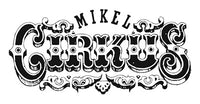Losing My Virginity
Richard Branson's Virgin Atlantic flew its inaugural flight between London Gatwick (LGW) and Newark Airport (EWR) in 1984. Three years later, the airline would be adding another Boeing 747 to its fleet and were planning their first scheduled flights from LGW to New York's JFK. This was going to need some seriously irreverent advertising, and Korey Kay was just the agency to do it. It was an exciting time to be with the agency, and while all the creatives in-house, including myself, were given a chance to work on concepts for subway and bus boards, the full-page ads that would appear in the New York Times and Rolling Stone remained with the head creatives, Neil Leinwohl and Kevin McKeown. The ads they created were centered around resurrecting the V sign - that all too familiar hand gesture in which your index and middle fingers are raised and parted to make a V-shape while your other fingers are clenched. Historically, it has various meanings, depending on the circumstances and how it is presented. "V for Victory" was first introduced in 1941 as part of a campaign by the Allies of World War II, but during the Vietnam War, the "Peace Sign" became a symbol and gesture most commonly used by hippies and the counterculture. Twenty-five years later, in a short-lived campaign, it was "V for Virgin."
Charisma Records was acquired by Branson's Virgin Records in 1983, and by 1986 Virgin absorbed the label and its entire catalogue, which included the last thirteen albums from Genesis. For the band's fourteenth album, Invisible Touch, Richard Branson wanted to cross-promote their upcoming North America Tour with his airline's new routes to America. Neil and Kevin were briefed by Janett Schickler, the Account Manager, that they were going to have to do an ad, and a commercial, with the band. There was no way I could work on the creative itself, but the very least I could do was provide some insight. The box of inspiration I delivered to Neil contained my entire Genesis CD collection, my photo album of magazine articles, a plethora of old fan club gems, and the great photo reportage book by Armando Gallo, "I Know What I Like." All they knew was whatever they had heard on the radio, and I was providing them with a crash course in the band's provenance. Needless to say, they liked what I knew.
Working for John was demanding enough, and asking for time off was just not something I did without plenty of notice. It was just about three o'clock, two days after my twenty-fourth birthday, when the receptionist buzzed my cubicle to let me know that Kevin was on the phone. "Mikel, can you get your ass to Philadelphia by six o'clock tonight?, he asked. I didn't need to ask why, but I did need to ask permission. With a bit of groveling, John gave me his best impression of Jewish guilt and his blessing. I took the Amtrak 4:20 from Penn Station, down the Northeast Corridor, and rolled into Philadelphia's 30th Street Station by 6:00. My instructions were to meet Kevin, Neil, and Janett at the Palace Hotel across the street from The Four Seasons on 18th. They were up on the 22nd floor, as were Mike Rutherford, Tony Banks, and Phil Collins, or as they're more commonly known, Genesis. The band had already left for rehearsals, but the limo was waiting outside the hotel to escort our team to Veteran's Memorial Stadium for the concert. I was given a fifteenth-row center ticket and a VIP lanyard that was my backstage pass to the pre-show meet 'n greet.
As much as I remember every detail leading up to that moment, the moment itself is as hazy as a dream when you first awaken. I was ushered into the room and positioned for a photo with guitarist Daryl Stuermer and drummer Chester Thompson, and of course, Mike and Tony. I had caught a glimpse of Phil earlier, heading in the opposite direction, in a golf cart being driven by a pretty blonde woman. In my mind, this was the beginning of the end for Genesis, and their 'V for Virgin' commercialization was just one more sign of that Invisible Touch they were promoting. By December of the following year, the campaign and my time at Korey Kay had both run their course. Once more, it was time for me to go. It was never getting better than that.



Leave a comment